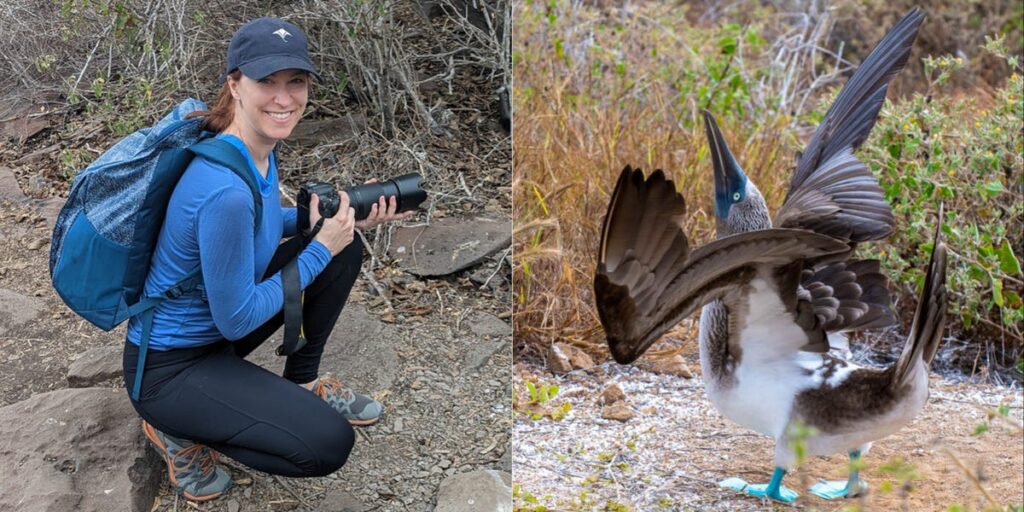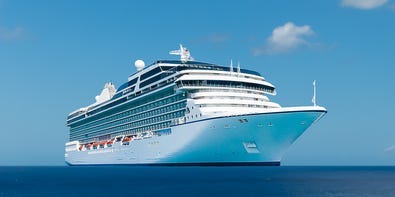- As a South American travel specialist, I’ve traveled to the Galápagos Islands several times.
- Travelers can expect to see species like the giant tortoise and the blue-footed booby.
- Adventurous visitors can even hike to the rim of one of the world’s largest volcanic craters.
I’ve worked as a South American travel specialist for eight years and have traveled to all 13 of the main Galápagos Islands.
Located 600 miles off the coast of Ecuador, the beautiful islands are mainly known for the many rare wildlife species that reside there.
Here are the top things I think every first-time traveler should do when visiting the Galápagos Islands.
See the islands’ most famous residents up close
Many of the birds, reptiles, and mammals found on the Galápagos Islands are endemic, meaning they can’t be found anywhere else in the world. Perhaps the most well-known species in the Galápagos is the giant tortoise, which can weigh over 500 pounds.
In my experience, the best place to see them in the wild is in the highlands of Santa Cruz Island, where you can visit a private reserve like El Chato. You can also see the giant tortoise at the Charles Darwin Research Station’s breeding facilities on Santa Cruz Island.
However, keep in mind that Galápagos National Park rules mandate that visitors must remain at least 6 feet (or 2 meters) away from all wildlife. If you get too close, the giant tortoises may hiss like enormous cats to warn you to step back.
Hike to the rim of one of the world’s largest volcanic craters
Visitors to Isabela Island can hike to the rim of the Sierra Negra Volcano, which is one of the largest craters in the world.
The trailhead is a 45-minute drive from the town of Puerto Villamil, and the approximately 12-mile hike typically takes about five to six hours to complete.
Since the volcano is within the national park, all visitors must be accompanied by a licensed naturalist guide.
See the blue-footed booby’s mating dance
In my opinion, nothing is more entertaining and fascinating than experiencing the blue-footed booby’s intricate and goofy multi-part mating dance.
These iconic birds can be found on the majority of the islands and their mating dances typically take place during the spring and summer months.
Experience the underwater world while snorkeling or diving
The ocean surrounding the Galápagos has just as much action as the islands themselves, and snorkeling and diving are the most popular ways to experience it. The protected marine reserve surrounding the islands is home to endemic species like the Galápagos penguin, the only species of penguin found in the northern hemisphere.
You may also be lucky enough to see the marine iguana, the only known swimming iguana in the world.
Visit a coffee farm in the highlands of Santa Cruz
The rich volcanic soil of the Galápagos Islands is ideal for growing coffee beans. Because 97% of the islands are within the national park and only a small part can be used for agricultural purposes, coffee production is limited.
However, several coffee farms on Santa Cruz Island offer tours and tastings.
Experience local life in the town of Puerto Ayora
Only four of the 13 major islands in the Galápagos are inhabited by people. Puerto Ayora, located on the island of Santa Cruz, is home to the largest human population.
I recommend stopping by the Santa Cruz Fish Market in the morning to watch the sea lions and pelicans patiently line up around the fish counter for scraps. In my opinion, this is one of the best ways to have a glimpse of local life and witness how the islands’ human inhabitants coexist with the wildlife.
At night, enjoy dinner at one of the many restaurants along Charles Darwin Avenue that use fresh, local seafood from the market.
Learn about the human history of the islands
Although the wildlife tends to be the star of the show, the Galápagos Islands have an interesting human history as well.
Long before Charles Darwin visited in 1835, the Galápagos Islands were frequented by pirates and whalers. Post Office Bay on Floreana Island is named after the islands’ first post office. The office is a barrel placed by whalers on a small beach in the 1700s, where they would leave messages for other sailors to pick up and deliver.
If Post Office Bay is included in your itinerary, bring a postcard with you — visitors can still leave their own postcards in the barrel for other travelers to take and hand-deliver. Take a look through the pile to see if there’s a postcard you can deliver when you return home.
Sail past Kicker Rock at sunset
Visitors who explore the Galápagos Islands on a cruise may see Kicker Rock on the itinerary. The ships often circumnavigate this massive rock monolith rising about 500 feet above the ocean.
It’s also considered one of the top snorkeling spots on the islands.
Learn about conservation efforts to protect the islands
In my opinion, the most important thing visitors to the Galápagos Islands can do is learn about the initiatives in place to help protect their fragile, unique ecosystems.
For example, the Charles Darwin Research Station on Santa Cruz Island, and similar facilities on San Cristobal and Isabela Islands, raise endangered giant tortoises in breeding centers to eventually be released into the wild.
IGTOA, the International Galapagos Tour Operators Association, is a non-profit organization made up of travel companies, tour operators, and conservation organizations that contribute to a variety of conservation projects. It’s a fantastic resource for those looking for a conservation-minded professional to help plan an unforgettable (and sustainable) Galápagos adventure.
Correction: September 26, 2023 — An earlier version of this story misstated that the blue-footed booby is an endemic species to the Galápagos Islands. Although the islands are home to many, the blue-footed booby can be found along the Pacific coastline.
This story was originally published on September 23, 2023, and most recently updated on January 24, 2025.
Read the full article here
















